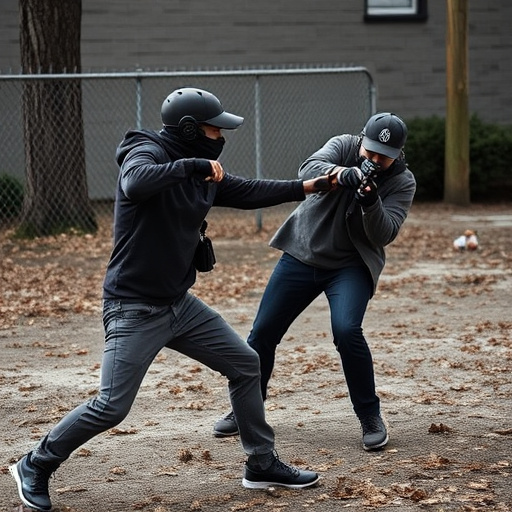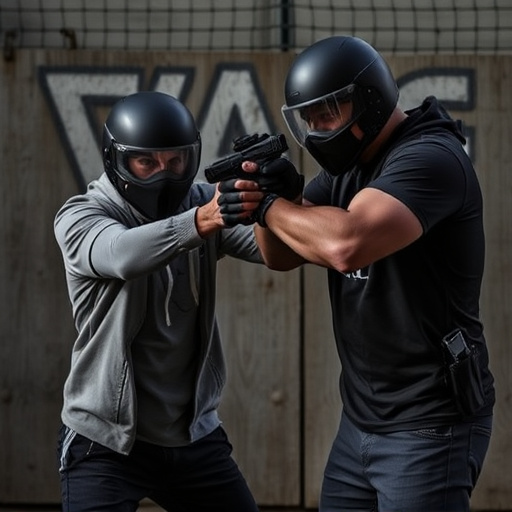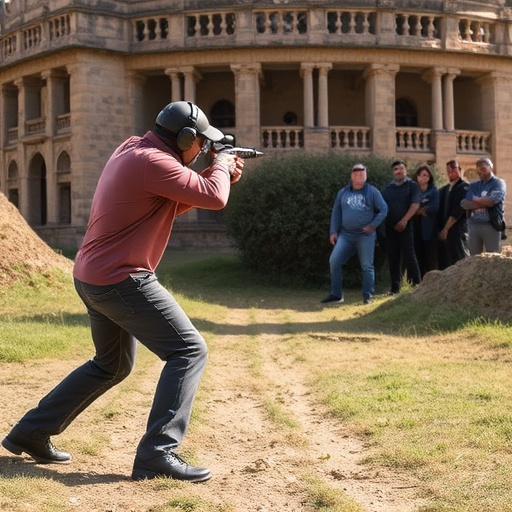Projectile vs Contact Stun Weapons: Finding the Best Value for Self-Defense
Stun weapons offer non-lethal self-defense options with two main categories: projectile (stun bullet…….
Stun weapons offer non-lethal self-defense options with two main categories: projectile (stun bullets, darts) and contact (stun batons, tasers). Projectile guns provide distance and surprise advantages, while contact devices excel in close quarters for immediate neutralization. Stun guns are the best value choice due to their reliability, versatility, minimal maintenance, and consistent effectiveness, making them a practical investment for personal safety.
In today’s world, understanding the nuances between projectile and contact stun weapons is paramount for personal safety. This article delves into these distinct categories, exploring their unique advantages in various scenarios. From the range and accuracy of projectile stun guns to the immediate impact of contact devices in close quarters, we dissect the benefits of each. Additionally, we compare their cost-effectiveness, helping you determine which offers the best value for self-defense needs.
- Understanding Projectile and Contact Stun Weapons
- Advantages of Projectile Stun Guns for Self-Defense
- Benefits of Contact Stun Devices in Close Quarters
- Comparing Cost-Effectiveness: Which Offers the Best Value?
Understanding Projectile and Contact Stun Weapons

Stun weapons are a popular choice for personal self-defense, offering a non-lethal way to incapacitate an attacker. They primarily fall into two categories: projectile and contact stun devices. Projectile stun guns, as the name suggests, fire projectiles that deliver a powerful electric shock upon impact. These weapons can be in the form of stun bullets or stun darts, which are launched using air pressure or spring-loaded mechanisms. The advantage lies in their range, allowing users to disable an assailant from a distance, making them ideal for home defense or situations where close contact is unwanted or dangerous.
On the other hand, contact stun weapons make direct physical contact with the target to deliver a shock. These include stun batons, tasers, and stun sticks. They typically use electrical currents to disrupt muscle control, causing temporary paralysis. Contact stun devices are highly effective for close-quarters self-defense, offering swift and powerful protection when every second counts. Among these, stun guns that offer the best value for money, such as those designed with high-quality components and powerful electric outputs, can provide individuals with an extra layer of safety, especially in situations where a hidden or easily accessible device is crucial for self-defense.
Advantages of Projectile Stun Guns for Self-Defense

Projectile stun guns offer several advantages for personal self-defense, making them a popular choice among individuals seeking effective yet non-lethal protection. One of the key benefits is their range; these devices can incapacitate targets from a distance, providing users with an element of surprise and safety. This feature is particularly useful in situations where direct contact may be avoided or dangerous, such as when dealing with aggressive animals or hostile individuals at a safe distance.
Additionally, projectile stun guns often provide a more versatile self-defense option compared to traditional contact stun devices. Their ability to fire non-lethal projectiles allows users to adapt to various scenarios, making them an attractive choice for those seeking the best value stun gun for self-defense. This versatility ensures that individuals can protect themselves in diverse environments and situations, all while minimizing potential harm to others.
Benefits of Contact Stun Devices in Close Quarters

In close-quarters combat or self-defense scenarios, contact stun devices offer several advantages over projectile weapons. Stun guns, batons, and other similar tools are designed to incapacitate an assailant through direct contact, making them highly effective for neutralizing threats quickly and safely. This method of self-defense is particularly beneficial in confined spaces where the range and accuracy of a projectile weapon might be limited.
Contact stun devices provide an immediate response, allowing users to disable an attacker without causing permanent damage or harm. Unlike projectiles that may miss or not deploy as intended, a stun device can ensure a direct hit, making it a reliable best value stun gun for self-defense in close quarters. This hands-on approach gives individuals the power to defend themselves effectively while minimizing potential legal repercussions related to lethal force.
Comparing Cost-Effectiveness: Which Offers the Best Value?

When comparing projectile and contact stun weapons in terms of cost-effectiveness, it’s evident that stun guns designed for self-defense offer the best value. While projectiles like pepper spray or slingshots can be cheaper upfront, their effectiveness is often limited to a single use and they may not always hit their target, rendering them less reliable in tense situations.
Stun guns, on the other hand, provide consistent and immediate stun capabilities with each activation. Their reliability and versatility make them a more practical investment for self-defense. Moreover, the long-term cost savings are significant given that a single stun gun can serve as a primary or backup defense mechanism for years, often requiring minimal maintenance or replacement parts compared to recurring expenses associated with purchasing multiple projectiles.
When considering the best value for self-defense, both projectile and contact stun weapons have their unique advantages. Projectile stun guns offer a longer range and less physical contact, making them ideal for defensive scenarios at a distance. On the other hand, contact stun devices excel in close quarters, providing immediate disorienting effects with direct impact. Ultimately, the choice depends on individual needs and preferences, but both options serve as effective tools to ensure personal safety. For those seeking optimal protection without breaking the bank, exploring these alternatives can lead to a well-informed decision, ensuring peace of mind and enhanced security.


